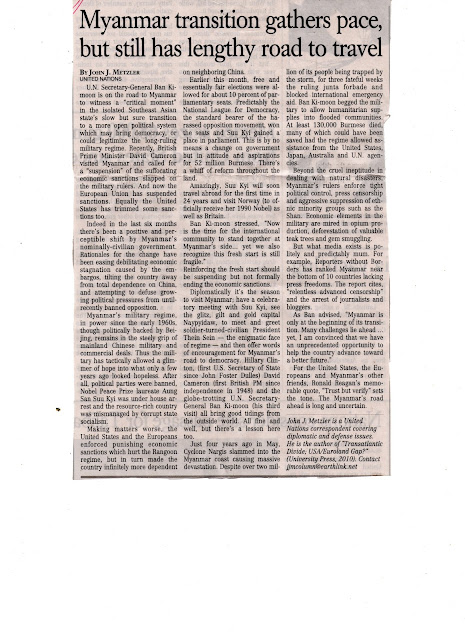The Mutual Defense Treaty Between the Republic of the Philippines and the United States of America was signed on August 30, 1951 in Washington, D.C. between representatives of the Philippines and the United States.[6] The overall accord contained eight articles and dictated that both nations would support each other if either the Philippines or the United States were to be attacked by an external party.[6]
As stated in article one of the treaty each party is to settle international disputes in a peaceful manner so that the international peace is not threatened and to refrain from the threat of the use of force in any manner that is inconsistent with the purpose of the United Nations.[6] Article II states that each party either separately or jointly through mutual aid may acquire,develop and maintain their capacity to resist armed attack. Article III states that from time to time the parties will consult one another through the use of their secretaries of state, foreign ministers or consuls in order to determine the appropriate measures of implementation.[6] The parties will also consult one another when either of the party determines that their territorial integrity, political independence or national security is threatened by armed attack in the Pacific.[6] Article four states that an attack on either party will be acted upon in accordance with their constitutional processes and that any armed attack on either party will be brought to the attention of the United Nations for immediate action.[6] Once the United Nations has issued such orders all hostile actions between the signatories of this treaty and opposing parties will be terminated.[6]
Article five defines the meaning of attack and its purpose which includes all attacks by a hostile power will be held as an attack on a metropolitan area by both parties or on the island territories under its jurisdiction in the Pacific or on its armed forces, public vessels or aircraft in the Pacific.[6] Article six states that this treaty does not affect, impede, or shall not be interpreted as affecting the rights and obligations of the parties under the Charter of the United Nations.[6] Article seven states that the treaty shall be ratified in accordance with the constitutional processes set delineated by the Constitution of the United States and the Constitution of the Republic of the Philippines.[6] Lastly, article eight stipulates that the treaty terms are indefinite until one or both parties wish to terminate the agreement. If the agreement is to be terminated either party must give one year advanced notice.[6]














![[jmyanmar018]](http://si.wsj.net/public/resources/images/OB-SQ062_jmyanm_DV_20120418022310.jpg) Reuters
Reuters 
